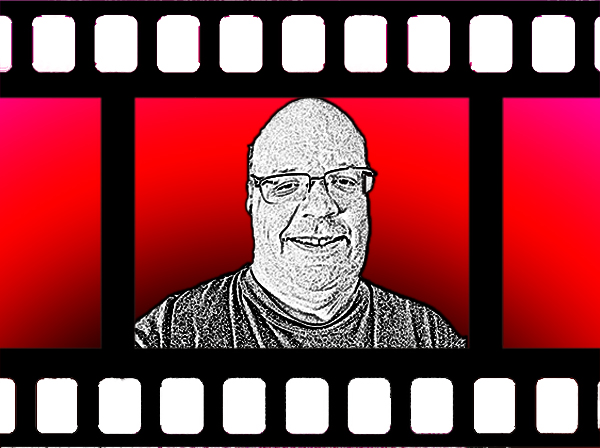
Sam Mason Interview
From Playing a Surfer Gang Leader to a Dad who Moonlights as a Serial Killer:
The Wild Ride in the Gore Barrel for Sam Mason
By Kevin Nickelson
Kevin Nickelson: Talk about your upbringing in Southern California with your stunt driver dad.
Sam Mason: Okay, I guess for me it was that my dad 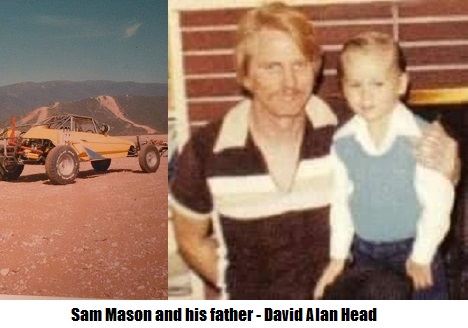 did a lot of TV shows, those 70s and 80s series. There was Hardcastle and McCormick. There was The A-Team, there was The Fall Guy. He did a lot of mechanics work on them. Also did a lot of the, you know precision driving stunts on those. So I really got an opportunity to be a part of it and see that aspect of not only his talents and skill, but also that side of the industry. Unfortunately, I wasn’t as into it at that point in time as I wish I could say I was.
did a lot of TV shows, those 70s and 80s series. There was Hardcastle and McCormick. There was The A-Team, there was The Fall Guy. He did a lot of mechanics work on them. Also did a lot of the, you know precision driving stunts on those. So I really got an opportunity to be a part of it and see that aspect of not only his talents and skill, but also that side of the industry. Unfortunately, I wasn’t as into it at that point in time as I wish I could say I was.
KN: Yet, you did get to see, even at that young age, something of the inner workings of how film and television shoots go.
SM: Yeah, yeah to a certain degree. I was very young at that age. So for me, it didn’t really all click at that point in time, but I was able to see and view him in that aspect and in that range.
KN: Now, I do want to ask you and I’ll add this as an additional question. Growing up, did you have any kind of horror film icon or or anything that you just loved as a kid?
SM: Anyone, Vincent Price, Christopher Lee or someone like that for me growing up. Once I got into horror, Children of the Corn scared the absolute, ever-loving shit out of me when I was a kid because they were kids and I could relate to that. The most iconic, for me, at my young age was definitely Hellraiser, Pinhead. I fell in love with the practical effects that they use as well as the story and concept, itself, of Hell being reigned on Earth. It was something that just always drew me in.
KN: Wow, that’s it exactly. My first exposure was with Night of the Living Dead and George Romero and that scarred me for life, as far as I was concerned. I was hooked on horror and there was no going back.
SM: Yeah, I absolutely agree. Being born in ’77 and, with Hellraiser and stuff like that coming out in the early 80s, those set me apart at that point in time. It was until I got a little bit older and started pursuing that (horror) a little bit more, that I really got into some of the older Vincent Price and Frankenstein stuff.
KN: From that point, after having that exposure with your dad, you did a rather circuitous route to where you are now in filmmaking. You’ve actually served in the Army, did some work in construction and even served as a security guard. It was right about that point, I was reading, that you had begun your passion for acting. Talk about this rather interesting route that you took to go to the acting profession.
SM: Well , I’ve always done stuff that interested me and I found technically enjoyable. I’ve got a very engineer’s thought process mind approach to things. I think I see things very theoretically so, even if I’ve never done something before, I research it to the point where I can explain how to do it or how it’s done without actually having the personal experience or knowledge.
With acting, I did a couple plays as a kid, but never really pursued it and was always told that I would be good at it. I had a good look for it. 2006 was when I really gave acting a shot and started putting myself out there, trying to get gigs. I was lucky enough to land a lead for my first acting job.
KN: Let’s discuss a little bit about the film Idioms and you getting the lead. You’re playing this kind of unstable detective who is dealing with addiction. He’s got a murder that he is investigating and he’s convinced that there’s a conspiracy connected to it. Was it kind of a shock to you that you were not just in your first acting experience but that it was as a lead? Was there any kind of pressure on that?
SM: Well, there was definitely a lot of pressure for being my first acting gig, but at the same time, I felt that it was something that I could handle, that I could relate to. I could empathize with this character as I’ve struggled with my own demons and my own addictions. So I could really relate to the detective. There was something of a John Travolta/Samuel L. Jackson-type chemistry between myself and the other lead. For me to be able to get into that character and pull from my own experience, I think it really worked out very well. There was a good balance and we played our chemistry well.
KN: Good mention of Sam Jackson and John Travolta from Pulp Fiction. I don’t think you could have two more disturbed individuals than those guys!
SM: No, I absolutely agree. The chemistry and the beauty of their acting and their techniques was absolutely marvelous and spot-on with what Quentin Tarantino does.
KN: Exactly. Now, from there you actually started to expand your range and the display of your acting skill. You have this role come around the Legend of the Drunken Monk where you’re playing, and this just seems off, a surf gang leader. And I think you said, at one point, that this was something kind of based on the Spiccoli character from Fast Times at Ridgemont High.
SM: That’s correct. I definitely put together a Spiccoli-type 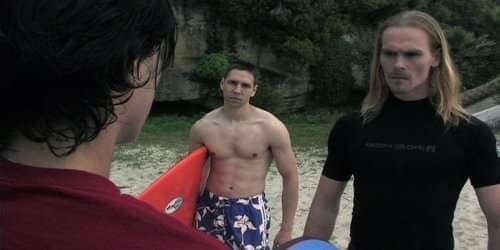 character for for that particular scene. It was something like “Look dude, you know, you really don’t like, fit in here. You’ve got this monk-like type thing going on, you know, and this is a beach, bro. Not only is it a beach but it’s my beach, you know, bro. So what we’re going to do here is we’re going to kind of… my guys are going to kick your ass and get you the fuck off my beach!” It definitely opened up the range and it was a lot of fun to work with Jordan and the guys in that group. It was very campy and cheesy but definitely a lot of fun.
character for for that particular scene. It was something like “Look dude, you know, you really don’t like, fit in here. You’ve got this monk-like type thing going on, you know, and this is a beach, bro. Not only is it a beach but it’s my beach, you know, bro. So what we’re going to do here is we’re going to kind of… my guys are going to kick your ass and get you the fuck off my beach!” It definitely opened up the range and it was a lot of fun to work with Jordan and the guys in that group. It was very campy and cheesy but definitely a lot of fun.
KN: How much experience did you have waxing a board? Now be honest with it.
SM: You know, I actually did surf a lot when I was younger. So I had quite a bit of that experience. Unfortunately, I didn’t get to use it in this film. If I would have thought about it I would have gone with a little bit more of a Bodhi-type character. I think how I did play that character came off really well, though.
KN: You are now in the middle of this whole range expansion phase and you seem to be trying to never do the same thing twice. Yet, with your next film, you do go back to playing the rather sinister character. This is for a short that you did, called Dead End. Talk about that a little bit.
SM: Dead End was really a lot of fun. I think it breaks into the psyche of what we do as humans and surviving under the right circumstances. It was really a lot of fun for me to play that intimidating, dark alley character. I’ve always been told that I can play that type. I think it’s because of my military background and the way I hold myself. I pushed my shoulders back, my chest out and raise my head up. I carry myself with a little bit of pride, I think. It intimidates a lot of people. I kind of have that natural, ‘don’t screw with me’ type look and being able to add a little bit of dark, dirty, nasty, mean, evil character to it was a whole lot of fun. I was able to pull from my experiences of being homeless and doing what I had to do to survive when I was on the street. Being able to draw that from my own experience and create empathy for the character was a lot of fun as well.
KN: It’s interesting that you talk about raising your shoulders back and so forth, because I know that I’ve seen actors with a similar physical approach. An actor like R. Lee Ermey, for example, who was a former drill sergeant and career military man in real life before going into acting. Whenever he would do a roll, it was usually as either tough authority type or a drill sergeant. He had the square shoulders and wasn’t the tallest of guys. Yet, he definitely had a presence that he gave that you just didn’t fuck with him. You did not mess with him at all. Strong, confident authority. I could see that same presence in you. That authoritarian who doesn’t take shit from anyone.
SM: For me, there’s a saying that goes around that says there’s a whole lot of people in this world to fuck with. I’m probably the one that you want to pass by, to a certain degree. I kind of like that about myself that I can present that presence, that intimidation. I don’t necessarily do it for personal gain or anything. It’s just how I am. It’s a part of who I am. When I’m walking or whatever I’m doing, I just carry that with me. It’s just part of who I am at this point in time in my life. It’s just a lot of fun to play those types of characters and keep exploring my range.
KN: There is the old actor’s argument of the difficulty of playing drama versus comedy. Where do you lean towards which is tougher to do.
SM: I definitely think comedy is a whole lot harder. You and I had discussed before, in a private conversation, about the timing being absolutely necessary and what it takes to create that timing with pauses, technique and all that stuff. You also have to have that chemistry on camera, not only with the writing and being able to empathize and grow with the character, but also the chemistry with everyone on set. It’s very hard to create a comical sense on camera when you’re alone, no matter how good the writing is. If your timing isn’t spot-on, it’s gonna suck and it’s going to show. I think, for me personally, the comedy aspect of things is a lot harder to do than it is a dramatic or menacing character.
KN: Next up is what was described in your bio as the casual redneck. I’m still trying to get my head around what that is really, but it’s the description of the character of Professor that you play for the picture Four 1 Liberation Front. Here’s a conspiracy theorist who’s got a lot of issues going on. What was behind that character in that film?
SM: I kind of drew some more from my military experience in this. I served time in the military at Fort Hood and so I had that experience of being in Texas and the different dialects. I experienced the bull riding and the whole Texas culture and was able to take and put that into the character. I could not only use my intelligence, but also be something of a dim-witted redneck who drank beer and hung out with all his friends and was a lot of fun for his wife to deal with.
KN: Why do I sense a little bit of Larry the Cable Guy? I think there’s that little bit of Larry in all of us.
SM: Oh, absolutely. Absolutely. He’s more real than a lot of comics. There is a little bit of Larry in each of us. I just don’t think we want to admit to it too much.
KN: Stepping back a minute. Before you did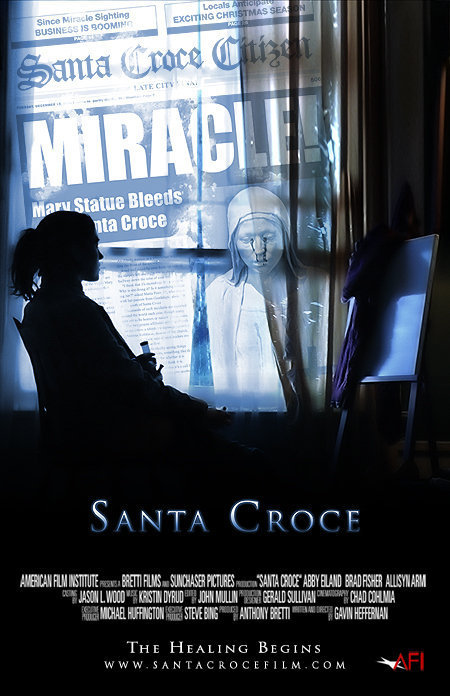 Four 1 Liberation Front you did another short with a truly intriguing premise. It was called Santa Croce and is about a miracle taking place in a tiny California town with bleeding showing up on a statue of the Virgin Mary and it’s witnessed by the entire town. It’s about the image of that and the impact it has on this one little girl. You had told me, in private conversation, that this was just a role for for you as an extra but you got some interesting things out of the experience. Can you go ahead and talk about that?
Four 1 Liberation Front you did another short with a truly intriguing premise. It was called Santa Croce and is about a miracle taking place in a tiny California town with bleeding showing up on a statue of the Virgin Mary and it’s witnessed by the entire town. It’s about the image of that and the impact it has on this one little girl. You had told me, in private conversation, that this was just a role for for you as an extra but you got some interesting things out of the experience. Can you go ahead and talk about that?
SM: Oh, absolutely, you know for me it was the first real big set that I was on. A professional-type set. For me it was more exciting and about just being there and doing what I could to make my presence known and let the director know that this guy’s a halfway decent actor who hits his marks, that did his part.
For me, I went from a sleazy dirty biker to a professor on the same set because the director called me back after seeing I was doing my part, selling my t-shirts and taking advantage of the situation. He had me shave, get changed up and put in a completely different wardrobe and was put into a whole different scene. I had about ten minutes to accomplish this. I was able to go from the dirty, sleazy biker type to clean-shaven professor in a matter of minutes. It was a lot of fun yet, at the same time, very stressful.
I wasn’t really paying attention too much to the storyline of Santa Croce because I was just trying to take it all in as it was, I think, my third or fourth acting gig. I was just kind of trying to make an impression and make it known I was a good guy to have on set.
KN: Was this the type of project that, when you weren’t filming or when you weren’t in or called to a scene, you were able to actually just take a step back and kind of observe what’s going on? Was that something that you experienced with this?
SM: A little bit. I was able to sit back and observe a little bit of it and see how they did things, how they ran things. Once again, it was a really big set. There was a lot of people and a lot of movement. Even out in the daylight you had bouncers and you had lights and all of this stuff going on to kind of occupy you. I was trying not to get distracted too much while I was on that particular set. I was making sure I did what I was asked and what I was there for. I bet that that’s something that the director and the crew people get impressed about and may just hire you again.
KN: Always knowing your mark and being professional and just keeping focus on your job is an imprint that’s left with the better directors.
SM: I hope one day that I can work with Gavin (director Gavin Heffernan) and the crew again in a much bigger part, hopefully. I have a lot of fun being on set and being a part of that process. I love film. I love acting. I love directing and producing and all the other things I’ve gotten involved in over the last couple of years. Just being a part of something bigger than myself and learning as much as I possibly can to grow my own art and my own passions is always an honor.
KN: Let’s talk about the guy who is kind of your mentor and been your advisor as it were. William Rice, director of Four 1 Liberation Front. Elaborate on your work with him.
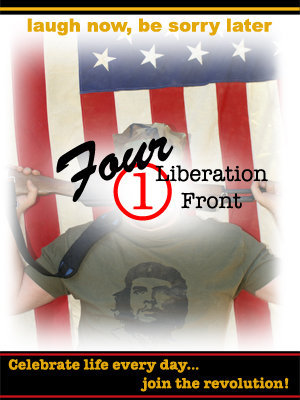 SM: Four 1 Liberation Front was my first co-starring role. It was my first year not only co-starring but also my first feature film and so it was a lot of fun to look back on that. We became a family on that set. We worked together for, I think, six or eight weeks or something like that. Not only did I do the acting but I also fabricated a lot of props and made a couple of different things for that set. I asked a lot of questions. I really wanted to know what it took to write a script. That was where I fell in love with the process of how a film goes from script to screen.
SM: Four 1 Liberation Front was my first co-starring role. It was my first year not only co-starring but also my first feature film and so it was a lot of fun to look back on that. We became a family on that set. We worked together for, I think, six or eight weeks or something like that. Not only did I do the acting but I also fabricated a lot of props and made a couple of different things for that set. I asked a lot of questions. I really wanted to know what it took to write a script. That was where I fell in love with the process of how a film goes from script to screen.
KN: Having a director like Rice, who’s known for directing Leprechaun 2, and with your being on set and having somebody with all that experience, there’s really an opportunity to open up with him and have him talk to you on a private, personal level about what it takes to do things. Was there such a conversation?
SM: I can’t remember if he said it shouldn’t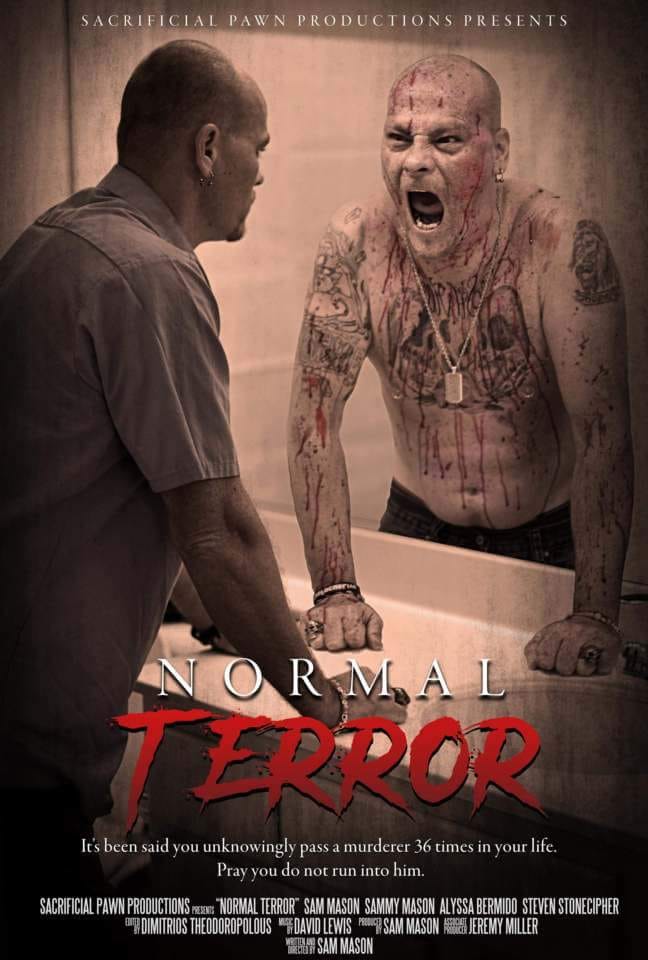 take any longer than a month or two to six months or a year to write a script. But once you sit down you should have all the ideas in your head ready to go. It was really something that stuck out to me. That’s exactly what I did with Normal Terror, the film that we’re currently in production on. It’s the first film that I’m writing, directing, producing, doing the structural face casting a lot, lighting, grip and all this other stuff. I sat down and I wrote that in a matter of a month, from start to finish. Taking his advice and listening to things that I learned on that set really is what gave me the passion to want to be more than just an actor.
take any longer than a month or two to six months or a year to write a script. But once you sit down you should have all the ideas in your head ready to go. It was really something that stuck out to me. That’s exactly what I did with Normal Terror, the film that we’re currently in production on. It’s the first film that I’m writing, directing, producing, doing the structural face casting a lot, lighting, grip and all this other stuff. I sat down and I wrote that in a matter of a month, from start to finish. Taking his advice and listening to things that I learned on that set really is what gave me the passion to want to be more than just an actor.
KN: Taking a month to write the script is just amazing. As a writer myself, who has tried and failed to do scripts before, I end up asking what did I do wrong? Even with the article writing I do, it takes a good deal of time to come up with a rough draft of it. You must treat it as something as a free-form release rather than any any kind of methodical writing.
SM: It’s just like writing down the script as it appears in your head, the story. Write it down and don’t worry about the niceties of punctuation and spelling and so forth. That could be handled in rewrites down the road.
KN: Was that kind of how you approached script-writing for Normal Terror?
SM: Yes. I started with a synopsis and then I went and developed the story. You also have to understand that, with Normal Terror, I wrote the synopsis back in 2006 after I had found the passion for how film works and going from concept to screen. I started developing that story back in 2006 but didn’t start writing it until October 2017. That’s about eleven years. I developed that story a lot in my head even though I didn’t actually do anything with it until October 17. Then, when I sat down to write it, I had a beginning, a middle and an end. Basically, the rest of it was just a bunch of filler. That’s pretty much how the story should go. My opinion is, have that catch in the beginning that brings people, have the climax in the middle and then try to carry that climax out. Give it a little bit of draw at the end and throw another plot twist in to screw with the psychology of the audience. Then you come back and go back and forth over the details in-between, throwing a twist or a little bit of something here or there to grab the attention. With Normal Terror, there’s a lot of psychology behind the character and in the script itself.
KN: Now, for a guy who’s had eleven years of having characters his head, well, there’s a lot of people that get institutionalized for having voices in their mind for that long! How did you avoid it actually?
SM: That brings up another one of the movies that I’m going to be doing. In fact, I have six other scripts in my head. The line that I wrote for the opening of this other movie says the difference between sanity and insanity is the ability to keep your insane thoughts inside of your sane mind.
KN: It seems like you’re in this phase now where you’re really embracing the multi-hyphenate of director, producer, actor, effects creator. That kind of thing. You’ve got Sacrificial Pawn Productions going on. You’ve got Stone Mason Effects with Steven Stonecipher and it just seems like, as we’ve talked about, you’re determined to learn every aspect of film.
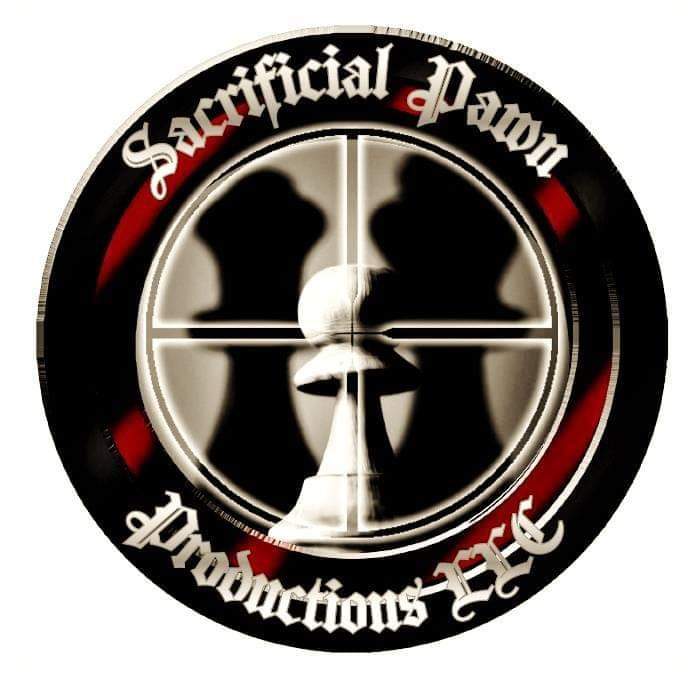
SM: I agree. Yes. I don’t know much about operating a camera, so I’m not going to attempt to do that. That’s why I hired a DP. But I have to be able to explain my vision to the DP so that the Director of Photography or the cinematographer can get the shots that I want. As to me doing everything that I’m doing, the primary focus on that was not so much to learn or know everything about the industry or business or how it all comes together. It was more out of necessity because of funding and financing. Since I’m a pretty deep thinker and a theoretical-philosophical kind of guy, I had to really get into the ingenuity side of things and figure out a way to make this on as little of a budget as possible. In the beginning, I was funding the thing completely myself. In order to get that done, and still pulling crew and everything else, a lot of it had to be done on the back end. You’re offering percentages in hopes that it goes somewhere and it does something. That’s one of the reasons that I have to wear so many hats on this film. The more that I do it, the more we push, promote, create this cult following that we have, the more I really enjoy learning and knowing more and applying that aspect to my repertoire not only as an actor but as a filmmaker.
KN: You know, it’s an interesting plight with a lot of independent filmmakers. The feeling is that, while they lament not having the funding that a bigger major studio picture would have, they are actually also having a certain sense of relief that they are able to have complete control of their vision. Here, you’re talking about handling producing, directing and casting yourself and doing special effects on top of it. It would seem that the one thing that you would have positive to cling to, one of the big things, is that this is clearly, entirely your vision. Is that something that you kind of take pride in?
SM: That’s actually a really big part of it and something that I had a lot of fears over in the beginning. I thought funding would be a lot easier to come by because I didn’t have that experience in the industry that I probably should have to take on a feature as my first writer-director- producer job. But, having the creative freedom to make my vision a reality is extremely important to me because, like I said before, I’ve been developing the story for eleven years. So, to finally see it start coming to fruition is really a big deal for me. Yes, I would love to have the money of the studios or even just bring in some investors and executive producers. It would need to be understood that the reason it is to become what it is and why they want to be a part of this, looking at the statistics and the money that they are putting out while understanding that the money that it’s making back is a part of their return on investment. That, even with that, they’re going to have to kind of be a silent partner and they’re not really going to be able to say a whole lot to change the vision of what I have. The reason it is where it is and where it’s going is because of the vision that I have sold them on with what we’ve done so far. I have no problems bringing in other investors and people and I have no problems taking critique and criticism to make it the best it could possibly be. Ultimately, it is my vision, with or without their money. I’m going to be doing it.
KN: Now, let’s talk about Normal Terror. You’ve got this character, Sam Neill, who is a struggling single dad trying to do the right thing by day and he’s dealing with the day-to-day life of his children and so forth. He seems to develop a desire for becoming a serial killer whenever the opportunity strikes. That’s a unique moonlighting job!
SM: There’s a lot of duality in life itself. Part of the psychology behind this film is that you know our society today is such that, while they say one thing, they quickly turn around and forget or moves on to the next thing that the crowd is following. So I think it was important for me in creating this character, to take a lot of my own personal experience and apply them all while adding in the aspect of the serial killer like you see out there today. They’re very charming, charismatic and personable people. They’re the people that you least expect. So, when I was doing my research for that aspect of the duality of that character, it was very important for me to want to get the audience’s attention.
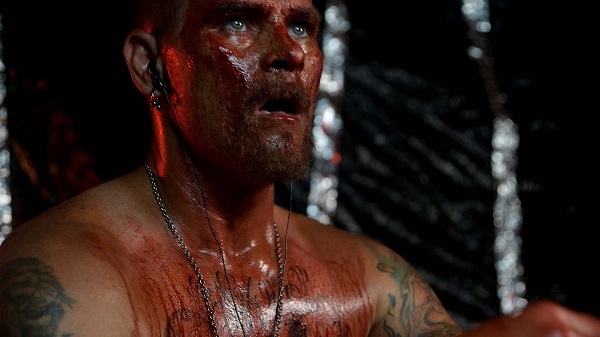 Ultimately my goal is, when the audience leaves a theater, to want them to look at the person next to them and wonder if it’s possible that the person standing next to them, a stranger, could possibly be a serial killer. I want the audience to fall in love and care for the dad side of this character and understand that, under the right circumstances, anybody has the ability, in our primal instincts as humans and hunters or predators, to do these horrible things if pushed far enough. Any of us are capable of doing what he does.
Ultimately my goal is, when the audience leaves a theater, to want them to look at the person next to them and wonder if it’s possible that the person standing next to them, a stranger, could possibly be a serial killer. I want the audience to fall in love and care for the dad side of this character and understand that, under the right circumstances, anybody has the ability, in our primal instincts as humans and hunters or predators, to do these horrible things if pushed far enough. Any of us are capable of doing what he does.
KN: There had to have been a little bit of concern when you are doing the film to have it structured from the viewpoint of the killer. I know from my own, personal, perspective whenever I’ve seen movies that have a similar point of view I feel like, as an audience member, I’m being made to go into a dark dirty, dangerous area of the psyche. Was there any kind of concern for you that audiences might react like that. Did you have to do a balancing act to get them to see the nice guy in Samuel?
SM: Well, especially nowadays, that a lot more people can relate to single parenthood and the frustrations it causes. My son is is also my co-star. He’s 15 years old and dealing with those hormonal changes and going through the struggles of finding and identifying himself. He’s his own little person with his own little character and becoming a man. I think we can all relate to the struggles in that difficulty.
Especially in this day and age here in California, where the cost of living is extremely high. So doing it and managing it as a single parent is a very difficult task. I think that, by adding that personable relationship, a lot of the audience is going to be able to relate to whether they were raised by a single parent or whether they are single parents regardless of whether it’s male or female. I think they’re going to be able to relate to that and I think that’s what’s going to help them understand the necessity for him to open up those primal instincts.
While we, as a society, have a moral code, we’ll be able to understand that the things that he’s doing are horrible atrocities but that everybody has to have a release somehow. I’m not really answering a lot of questions in this first installment of Normal Terror. The second one we have is going to go a lot more into his background and why he does what he does. In this one it’s more about drawing the audience in and introducing them to a whole different type of film. This type of film hasn’t been done from this angle before. It’s from the serial killer’s point of view before he’s caught. There’s no cops, no investigation and no background on the victims. No follow-up. There’s no one looking for them. You’re focused on this single dad and his kid and understanding the bond in the relationship they have. When he’s not with his son, he does this absolutely horrible, horrible thing.
KN: Now, this is a film that, critically, is being received very well. I know you’ve gotten some accolades based on this film. You received the Independent Community Arts Award from the Long Beach Acting and Film Association. Are you feeling overwhelmed? Overjoyed? Both?
SM: I was asked to be a guest speaker on that panel, a very star-studded panel with people with a lot of experience that have done a lot of stuff in the industry and to whom I hold a very high respect. I wasn’t told that I was going to be given the award. It really hit home with me. I hold a lot of gratitude that others in the industry that have been here for a while have seen what we’re doing and can understand and respect the art that we’re putting out. To be recognized for that, as somebody who’s giving back to the community, is really overwhelming to a certain emotional extent. It kind of blows my mind that other people see what we’re doing and appreciate and respect the hard work that my team and myself are putting out there.
KN: You must have exhibited solid composure skills because, if I was on a panel like that and presented with a surprise such as an award like that, I think my first reaction would be expletive-laden.
SM: We all have our personal sides, good and bad. I think it’s important, as a professional, to hold yourself accountable to that profession when you are especially on something (a panel) like that. Not trying to present myself as necessarily something that I’m not, but understanding there’s a lot of professionalism with my colleagues in the industry. I think it’s kind of a necessity to get by and put in, in order to push your brand and make people want to work with you and have that level of respect and professionalism.
KN: Let’s talk about some pending projects. You’ve said that you have some script ideas that you’re looking into and you’ve mentioned before to me, privately, that you have some film shorts you’re looking to have independent artists such as yourself do? Talk about that a little bit.
SM: It’s kind of like how Pixar has little animated shorts prior to their feature. One of the things that we’re going to do to give back to the independent filmmaker out there, and it wasn’t just my idea but my business manager and a couple of other people as well, is to play a short and get the audience warmed up prior to the actual feature. It gives the independent artist out there who’s trying to make a name for himself an opportunity to showcase their work ahead of a big feature on the big screen. That is definitely one of the things that we’re going to be doing. We’re going to actually have an open forum where they can submit it to us. We’ll show it on social media and let the fans, followers, friends and family decide on which one they think is best. Whichever one receives the most votes will be the one that’s put on a hard disk to theaters along with our film and we’ll do it as a company. We’re going to be doing that with all of our films regardless of whether it’s horror genre or something else.
KN: Will there be a website where people can submit these films or is that something that’s to be announced?
SM: Currently we’re working on getting a website developed. We don’t have that yet. One of the things that I learned early on is that I didn’t get the business side of things taken care of before I got to the production side of things. So I kind of rushed through that and I learned my mistakes regarding that. I do have a business and a business manager now. Miss Jamie Winton is an amazing person. I love her to death. She’s helping me get the business aspect of things, the contracts and all these other things, in line in order to make the production move forward smoothly, keeping our professionalism and respect as a production company in the process.
I do have three other projects currently in the works right now. One of them is a documentary called Tortured Artist, about a heroin addict who has found the light and gotten sober and is pursuing his dreams of becoming a rock star. I have a horror short I’m getting ready to direct and produce. Then we also have a music video for the same person we’re doing the documentary for. We’re also going to be doing a music video based on the title track to Normal Terror.
KN: The last question that I have is for all those young people who are picking up a camera for the first time and wanting to make their big stand in the film world. What advice do you have for them?
SM: I think Dave Grohl said it best when he was explaining about musicians. Nowadays, they give you the song and give you all their stuff. He said to get a couple friends together and go into a garage. It doesn’t matter what your instruments are like as long as they play. You go in there and you suck. You play and you suck. You play and you suck. You play and you suck. Eventually you guys form a chemistry. You guys start making something unique with yourselves. Then, in time, it becomes something that is unique and wonderful. I think the same concept goes for filmmaking. That is to follow your passion. Go out there and just do it because you want to, because that’s where your dream is. Whether you’re an actor, a filmmaker, director, producer or whatever it is you want to do, go out there and do something. Be attached to something. If it sucks, it sucks. So what? Learn from your mistakes and keep moving forward. Keep pushing. Find out ways to expand yourself and expand your thoughts, your ideals and your vision. Follow your passion, above all. Do it because you love it. Do it for the art and what you can contribute to the industry. I think that as long as you do that, you’ll be able to achieve your dreams and your goals.
KN: Well certainly I know that, if you follow your passion and you continue on this route you’re on, you will have unbounded success and I wish nothing but the best in your future. It’s been a true pleasure to interview you tonight, and I thank you very much for the time.
SM: You and I met awhile back at the Hollywood Show and I’ve been looking forward to this interview. This is the, I think, eleventh interview I’ve done in the last year. Eleventh or twelfth interview. It’s because of guys like you, the Horror with Sir Sturdy podcast hosted by Mr. Aaron Sturdevant, the Terror Inpodneto podcast and a couple of other things that I’ve done interviews with are why we’ve gotten where we are. So I really do appreciate you taking time to interview me.
KN: So there you have it. A talented filmmaker who embraces fractured psyches in his main characters, multi-tasks to an extreme level in getting his projects completed, and revels in being just a maverick independent. And a single parent devoted to his son on top of all of it. Two questions arise in my head. First, how does he find the energy on a daily basis? Second, why isn’t mainstream Hollywood knocking at Sam Mason’s door? Certainly has to be better than the umpteenth retread of something they trot out each year for the summer blockbuster.


